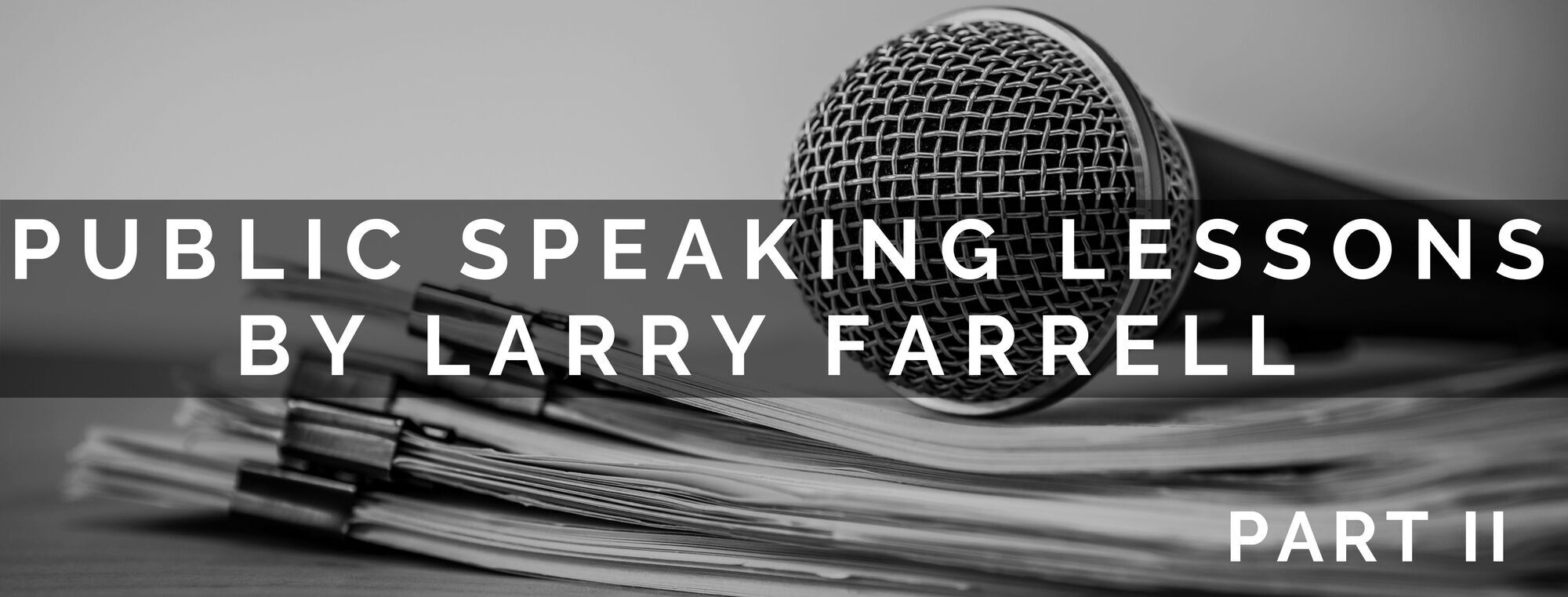
[This is the second of two blog posts based on Rick Goossen’s interview with Larry C. Farrell, who shares lessons he has learned about public speaking during a storied career on the platform.]
The Farrell Company has trained over six million students in its entrepreneurship programs, in some 40 countries, across 9 different languages. Over the nearly four decades it’s taken to reach these milestones, Larry Farrell has personally delivered more keynote addresses and taught more seminars on the entrepreneurial spirit - to more people than any other person in the world. Larry has spoken at ELO Forums multiple times over the years and has always delivered a great keynote.
Along the way, he’s learned a few important lessons about public speaking. In my communications with Larry Farrell, he shared four lessons. This first blog post covered the first two lessons, based on Peter Drucker and Tom Peters. This second blog post covers Ray Kroc and Sam Walton.
- The Ray Kroc Lesson – Love What You Do: “Kroc, the founder of McDonalds, loved to say: “You gotta see the beauty in a hamburger!’ Borrowing from the great entrepreneur, I would say to all public speakers: ‘You gotta see the beauty in the topic or theme you’re presenting!’ So this third lesson is all about showing love and passion for the subject you are speaking on.”
“Our research on the great entrepreneurs of the world, like Ray Kroc, Soichiro Honda, Steve Jobs and Richard Branson, shows they have one thing in common: They all have a ‘sense of mission’ about their work. They believe that what they are doing is important. It has value for their customers, their employees, and of course themselves. In a phrase, they love what they do.”
“While ‘loving what you do’ provides a built-in advantage for entrepreneurs – it can do the same for any person in any walk of life – and certainly including the field of public speaking. People with a sense of mission about their career and work, really do believe they’re doing something important, creating a lot of value, and through their mission, are actually leaving a ‘footprint in the sand.’ And that mission gives them incredible energy, desire and pride. The only downside I’ve ever found to being around this kind of person is that they will talk your ear off for hours on what a fabulously important thing they are doing for the world! And that’s the point here. That’s why having a sense of mission, and loving the subject you are presenting, is so essential to being a world-class public speaker.“
“Here’s a simple quiz to check yourself as a public speaker. How would you answer the following ‘love what you do’ questions?
- Do you believe that what you are presenting is really important for your audience?
- Are you presenting something that will truly add value to their lives?
- Do you personally ‘see the beauty’ in what you’re presenting – and really love the topic?
If you can answer yes to all three of these questions, you have passed the ‘Ray Kroc Lesson’ test and do indeed love what you do as a public speaker. If not, maybe you should find a new subject – or find another way to influence people!”
- The Sam Walton Lesson – Work The Crowd: “Walton, the founder of Walmart, the world’s largest company and still growing by leaps and bounds, loved to drive his old Chevy pickup to the parking lot of a store, lead the troops in the Walmart fight song and talk for hours with the assembled store employees. After his rah-rah speech from the back of his pickup, he got down in the crowd taking every personal question from any employee who asked. His famous quote sums up his speaking style: “The key to success is to get out into the store and listen to what the associates have to say.” Sam Walton was indeed a master at working the crowd.”
“The point here is to physically and emotionally involve your audience in your talk. Ask a lot of leading questions of both individuals and the full group, get down from the stage and mingle with the audience as you talk, get physical and even theatrical, and generally follow the Sam Walton Lesson of ‘working the crowd.’ A variation on this lesson is also “working the stage.” Move forward to the front of the stage and speak directly to participants in the front and then point with extended arms to the back of the room and speak directly to those folks too. And move from side to side across the stage making eye contact with audience members in the far corners of the room.”
“The fact is, the single most deadly sin any presenter can commit is to avoid the audience: To hide behind your podium for 60 minutes, looking down at your notes, making no gestures and turning your back to the audience to read your PowerPoint slides on the big screen. Learning the art of ‘working the crowd’ may not turn you into another Sam Walton, but it’s absolutely guaranteed to dramatically strengthen your personal connection to your audience!”